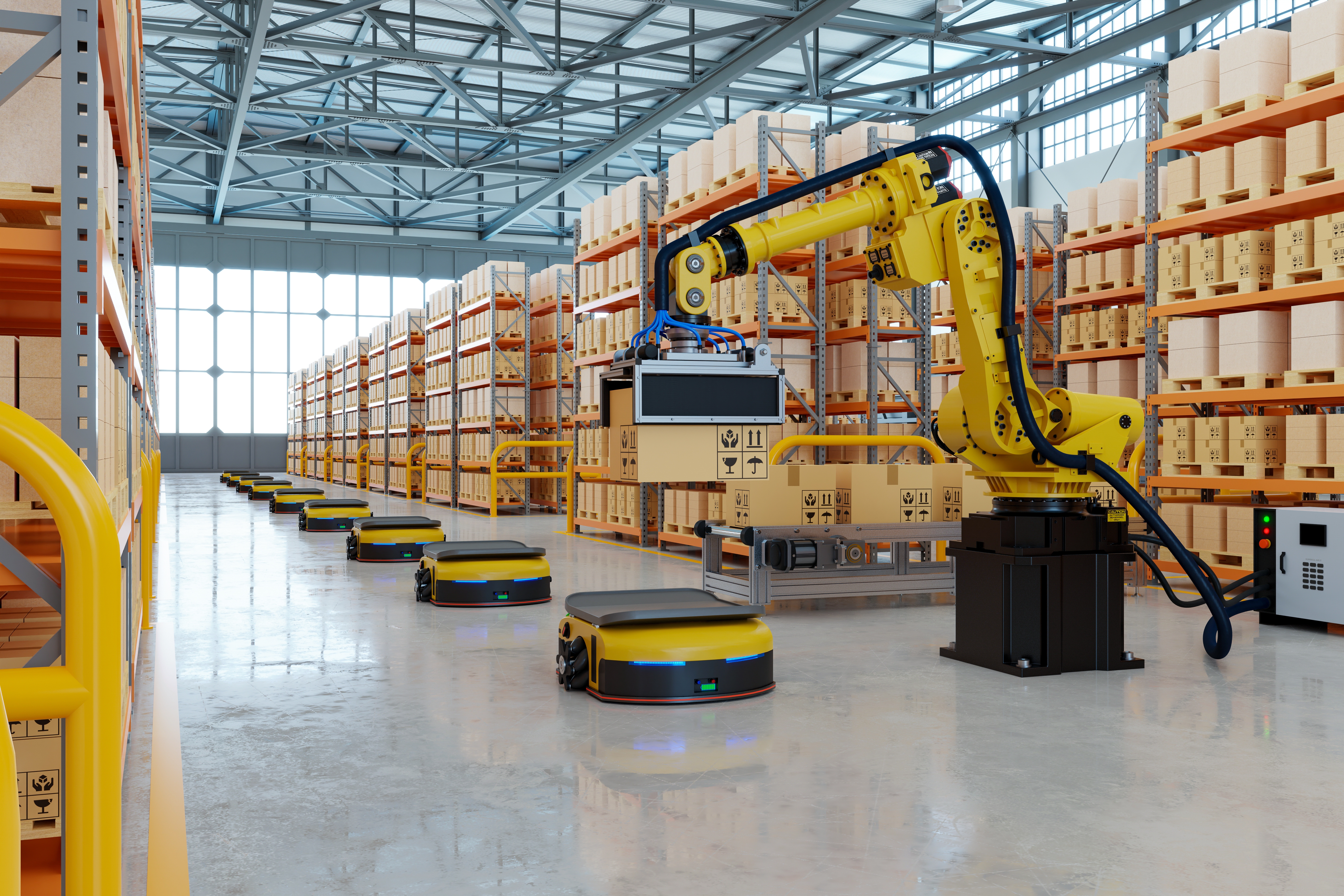
In-Depth
How 3 sustainability trends induce changes in the manufacturing sector
May 6, 2022
By
Canadian Manufacturing


Robotic arm for packing with producing and maintaining logistics systems. 3D rendering
The manufacturing industry is a dynamic sector that keeps coming up with innovations to improve processes, especially in reducing its environmental impact. In recent years, there have been three key trends and drivers that are at the forefront of developments towards sustainability.
1. Data-Driven Decisions
A typical predicament for companies aiming to increase sustainable practices is the uncertainty of how or where to even begin. Regardless of the type of industry or size of operations, you can never go wrong with consulting data.
Gathering and analyzing data about the equipment and processes in a facility can tell management a lot about the current state of its operations. With the proper types of instrumentation in place, the information gathered can enlighten teams about business areas that have the potential for improvement.
Take maintenance practices in manufacturing, for example. Modern, cloud-based solutions that aim to improve maintenance processes, are practical tools for gathering comprehensive data. Computerized Maintenance Management System (CMMS) programs can manage maintenance activity from work order documentation to sensor integration for gathering equipment information. With the proper measuring implements in place, such tools can provide valuable insight into which processes or types of machinery are operating inefficiently.
Remember that sustainability comes hand-in-hand with resource efficiency and the ability to measure and control the utilization of resources. By gathering information about an asset’s condition, teams can assess the level of effectiveness of each piece of equipment. In turn, the prioritization of sustainability initiatives becomes a data-driven decision based on potential returns from each project.
2. Stronger Supply Chains
With the amount of information available throughout an entire facility, teams will undoubtedly uncover opportunities to improve sustainability even beyond maintenance and operations. One key area more essential than ever is the supply chain.
From an environmental standpoint, 80% of the total greenhouse emissions of a company typically come from its supply chain. This information tells us that simply working with suppliers can mean the difference in reducing a company’s carbon footprint. However, renewable sources make up only about 11% of the suppliers’ energy composition. Imagine how bumping up this number across the board will impact the entire industry.
Aside from the indisputable benefits to nature, working on a sustainable supply chain also empowers companies to become more resilient. For instance, recent pandemic times have proven adaptability is an essential quality in keeping up with business demands. With all the uncertainty that lockdowns and preemptive travel bans pose, companies need to ensure that they can keep the flow of goods uninterrupted. Modern technology has lent a hand in this by accelerating automation and increasing connectivity.
A sustainable supply chain leverages the diversification of supply. For example, employing suppliers with higher renewable energy utilization does not only help the environment. It also decreases dependencies on unpredictable market commodity prices and supply.
3. Appreciate Affordable and Efficient Technology
Pursuing sustainable practices is both a business-driven decision and a social duty. Its benefits to the bottom line, as well as to society, are undeniable. However, the idea of advanced technologies and sizeable investments hold back companies from diving right in.
While it is true that high-tech software dominates initiatives towards resource efficiency, it does not need to cost beyond a company’s means. For instance, modern software that can track and manage a facility’s utility usage can come as software as a service (SaaS) and provide flexibility through tiered subscription plans. These smart systems are usually customizable to make sense for the specific type of industry and size of operations.
When it comes to the actual implementation of projects, not all technologies require technological infrastructure. Low-technology options expand the ways a company can engage in sustainable practices. For example, thinking about architectural designs and using alternative building materials can influence the resource efficiency of a facility. Using ancient technologies that regulate airflow through a working space will go a long way in optimizing HVAC requirements. Moreover, using recycled materials wherever applicable provides better performance while reducing waste generation.
Sustainable technologies do not need to be expensive. While some initiatives require an initial cost, companies can quickly realize benefits by exploring the affordable and efficient technologies available.
Print this page